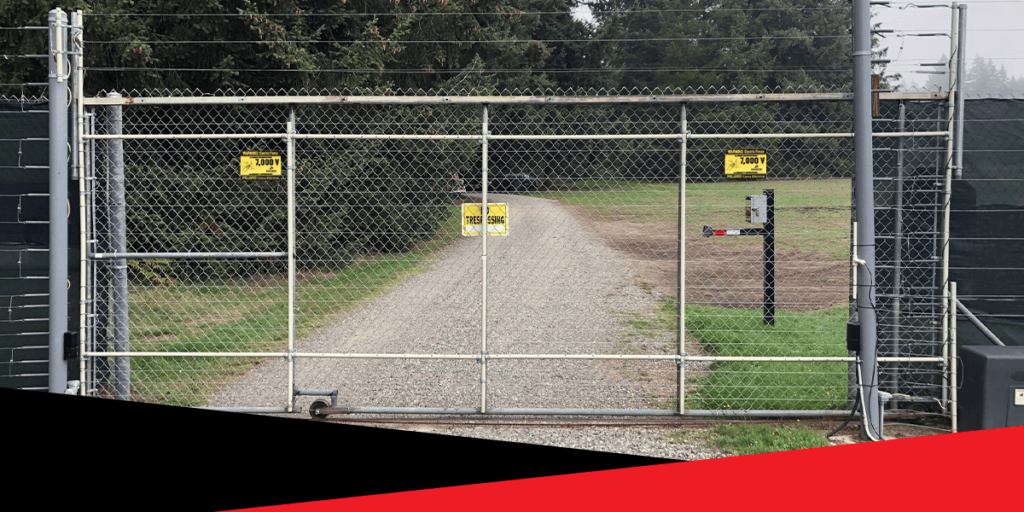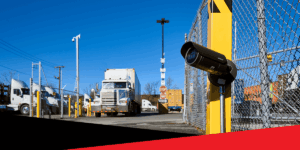Without farmers, the world wouldn’t have access to food. American farmers have always faced challenges, from weather-related problems to rising overheads. Today, you have another challenge to face — agricultural equipment theft. Your tools and equipment are essential to your livelihood and ranch, and theft can halt your operations entirely. As you work toward stringent deadlines, even the smallest delay can have lasting consequences.
Vehicle, copper, heavy equipment, and metal theft are among the top theft trends. As a farmer, you have all of these materials on your farm, making you a prime target for external theft. A strong physical security strategy is essential to stopping crime and maintaining profitable operations.
The Consequences of Agricultural Theft
Agricultural operations rely heavily on valuable machinery and equipment, which makes them vulnerable to the increasing prevalence of property crime. Recently, a theft ring in California focused on stealing heavy farming equipment was dismantled. It operated across six counties and accounted for more than $2.25 million in stolen equipment.
Criminals are becoming increasingly creative, and there’s always a market for heavy equipment and hand tools. Even water wells are attractive targets for criminals, who resell the pipes and components. Copper pipes are another common target in response to a surge in copper prices. These items can be challenging to trace, and criminals can make money on them through the resell market.
Farm theft has significant consequences for your operations, including:
- Financial losses: Agricultural crime, including equipment theft, results in substantial losses for farmers, insurers, and consumers. Replacing stolen equipment and components can be a massive financial strain, especially if you have a small farm. In addition, you must face potential insurance premium hikes and reputational damage if theft is a frequent occurrence.
- Productivity and yield losses: Without essential equipment, farm operations can grind to a halt, affecting planting and harvesting. You may not be able to irrigate your crops, which results in lost yield and the associated financial impact.
- Supply chain disruptions: Equipment losses and compromised farming operations affect the delicate balance of the supply chain, making your products more expensive while reducing profitability.

How to Protect Yourself from Farm Equipment Theft
Putting physical security measures in place to protect your farm from criminals is an investment in your longevity and profitability. Criminals will continue to target large agricultural properties if they can easily enter, take what they want, and exit. The best thing you can do is upgrade your perimeter security to protect your assets effectively.
The following strategies can help you protect your equipment against criminal activity:
Get a Risk Assessment
Assess your current level of susceptibility to external theft with a threat assessment. The process involves security professionals evaluating your farm to identify vulnerabilities in your defenses. They will consider the following:
- Farm size and layout: Professionals will assess your farm’s layout and pinpoint any low-visibility or vulnerable areas.
- Existing security: They will evaluate your current approach to security to uncover any weaknesses and recommend how to correct them.
- Local data: A professional security team will look into local crime and historical data to understand crime patterns in your area.
- Farming operations: Your farming practices and daily schedule could present opportunities for thieves to enter your property undetected.
Protect Your Perimeter
One of the factors that draws thieves to farms is the large, unprotected perimeter. Keep your equipment safe by creating an intimidating physical barrier between your assets and intruders. With your perimeter secure, you can focus on core agricultural activities with greater peace of mind. Install an electric security fence inside your existing fence, and send a message that you’re serious about security.
An electric fence is a powerful deterrent that delivers a safe but memorable shock to would-be intruders upon contact, which is more than enough to deter any subsequent attempts. You can also add numerous enhancements to your electric fence system, including laydown and angled fencing options.
Install Additional Lighting
Equipment thieves like to act under cover of darkness. Illuminate poorly lit or shadowy areas along your perimeter that give them opportunities to hide. Concentrate lighting around frequently targeted areas like water wells, storage areas, irrigation lines, roads, vehicle lots, and entry points.
Consider installing an alarm-based lighting system to add a layer of protection to your perimeter. If a would-be criminal triggers the electric fence’s alarm, the system activates bright lights.
Incorporate Video Surveillance Equipment
Video surveillance is another crucial layer of your overall perimeter security. Install cameras at strategic locations around your farm, including near gates, access points, irrigation equipment, and along your electric fencing. Focus on eliminating blind spots and addressing both day and night conditions.
If an intruder attempts to access the property, you can use the footage to provide evidence to the authorities. Implement weather protection measures to keep your video surveillance system operational during all conditions.
Take a Seasonal Approach to Farm Security
As a farmer, you’re accustomed to making adjustments based on the season. Take the same approach to your physical security for the best possible results. Make the following adjustments in each season:
- Winter: The colder months bring significant weather changes and a lack of visibility. Test your backup power systems and increase camera coverage to prepare for storms, snow, and a rise in property crimes.
- Spring: As the weather warms, you have the opportunity to address any damage that occurred during winter. Check your cameras, and complete a risk assessment to identify any vulnerabilities exposed by changing weather conditions.
- Summer: Longer daylight hours can change the location of shadows, so you may need to adjust your lighting. Trim vegetation along your perimeter to eliminate hiding places, and secure your equipment when not in use.
- Fall: Daylight starts to diminish, and falling leaves can obscure evidence of intruders around your perimeter. Implement remote monitoring and address reduced visibility in preparation for winter.
Implement a Multi-Layered Security Strategy
The best way to secure your assets is with a multi-layered security approach. Combining elements like an electric fence along your perimeter, video surveillance, lighting, and alarms connected to these systems gives your farm a strong defense against would-be criminals.
Enhance Your Farm Theft Prevention Strategy With AMAROK
Protecting your assets and critical infrastructure is essential to preserve your yield and productivity. Take the smarter approach to perimeter security with AMAROK.
It all starts with The Electric Guard Dog™ Fence — a physical barrier and shock deterrent that stops crime before it happens. In fact, 99% of AMAROK customers experience zero external theft after installation.
Request a free threat assessment today or call us at (803) 786-6333 for more information about our perimeter security solutions for agriculture.





